I’d like to think that my affinity for West Virginia, and for its incredible landscapes and avifauna, is in my blood. Buckhannon, West Virginia, is the ancestral home of the Zickefooses, where my great grandfather Benjamin Zickefoose started our line of Zickefoose teachers, physicists, policemen, engineers, writers, and storytellers. Our family lit out for the Great Plains, and it is there, I think, that the prairies got into my blood, but that’s another story. My reasoning is not biologically sound, I know, but it makes perfect sense to me.
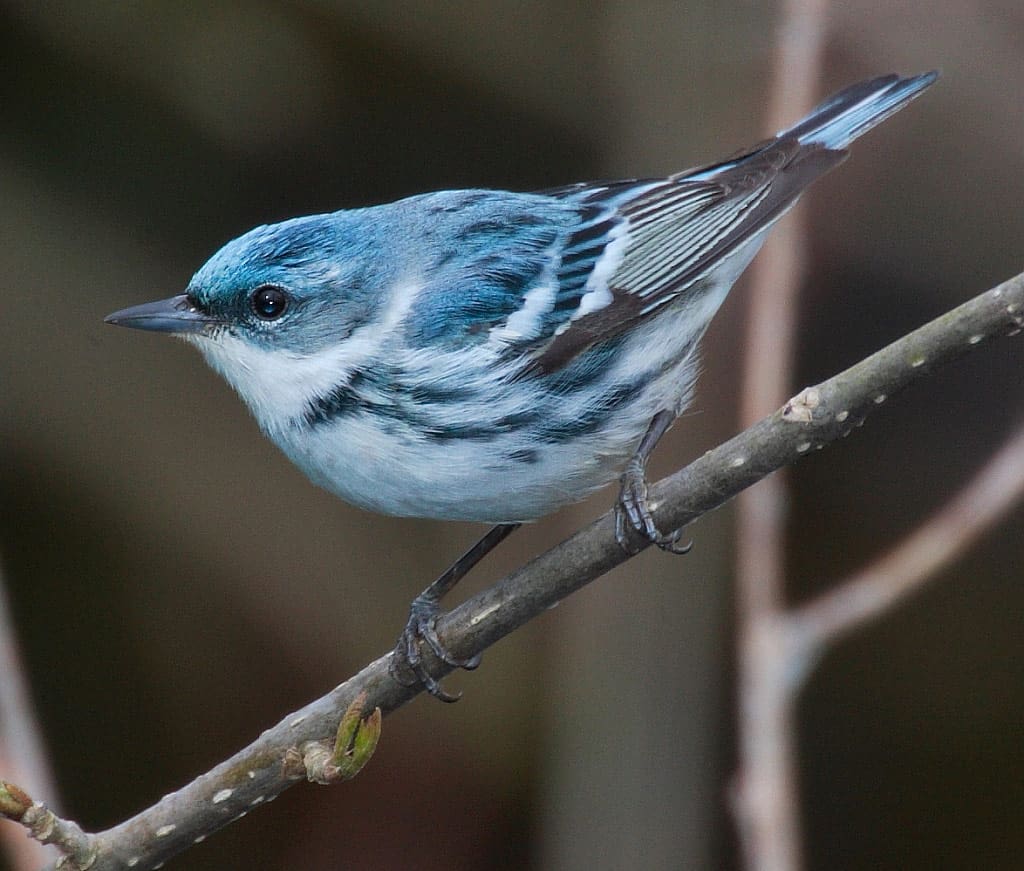
It is one of the great pleasures and side benefits of our profession that BWD editor Bill Thompson, III, and I get invited to speak at small birding festivals around the country. The line between what we’re being paid to do and what we would be doing anyway gets mighty fuzzy. I think the best part, aside from nonstop birding, is getting to know people who start such events, because most of them do it out of a pure love and pride of place, a desire to show it to others.
The New River Neotropicals Festival is one such event. Conceived as a way to open the bird-watching wonders of West Virginia to a wider audience, as well as to raise money for environmental education in local schools, it has a homegrown charm and attention to detail that set it apart from the pack. Imagine a homemade ziti banquet, with fresh fruit cobbler and ice cream for dessert, served in the soft, stained-glass light of an old Fayetteville church, and you’ve got a little slice of the New River Birding and Nature Festival.
Bird-watching ecotourism is a lovely thing—it is nonconsumptive and low impact, and the resource is endlessly renewable. Much of it centers on the birds’ migratory schedules, so we’re mighty busy in May and September. West Virginia is as uniquely suited to ecotourism—witness the camping, whitewater rafting, and hiking businesses sprinkled in every hollow—as it is unsuited to agriculture, unless you’re talking about certain herbs. Its high, rumpled relief means there’s a whole lot of surface area crammed into comparatively short distances. Translated, this means that you can see 24 breeding warbler species in a single morning.
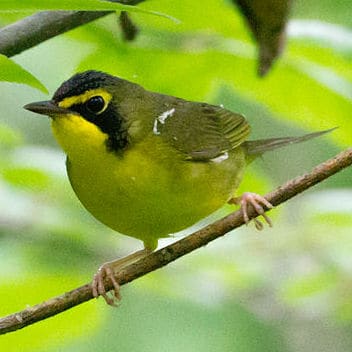
Yes, 24 species of breeding warblers. In the old days, a good migrant trap could bring as many warbler species in a morning. Some still do. But these are breeding. On territory. Accessible, mostly. Staying put. Singing. Able to be seen. We started our birding weekend in the New River Gorge on a foggy morning. Traffic noise from the bridge, second longest single arch steel span in the world and second highest bridge in the country, reached us through the mist, but it was hours before the bridge’s superstructure began to materialize. We craned our necks up the steep slopes, collecting images of a nest-building worm-eating warbler, feuding hooded warblers, lustily singing American redstarts, scolding ovenbirds, mustached Kentucky warblers, and dainty parula warblers. The sun built its case, and massive black bridge girders emerged, making a stunning graphic statement against its spreading rays.
Our companions and guides were Paul Shaw and Geoff Elliott, also known as Tiny. Paul is an artist and river guide. An expert birder, he exudes a woodsman’s quiet competence and deep respect for his West Virginia habitat. Mention a warbler, and Paul knows where to find it. Tiny is anything but—a 6-foot 4-inch tower of enthusiasm and raw humor. A strange melange of computer geek, avid birder, and whitewater guide, Tiny must be experienced to be appreciated. We laughed our way down the gorge. According to Paul and Tiny, West Virginia is a well-known proving ground for whitewater rafting guides, having the most challenging rapids in North America. “You can get a job anywhere if you’ve trained in West Virginia,” Paul declares.
Fayetteville is the epicenter of West Virginia’s outdoor athletic culture. Here, tanned, muscular rock climbers, mountain bikers, and whitewater rafters stride the quaint sidewalks, prepping for their next big adventure. It’s the gateway to the New River’s lower section—the really gnarly part, where the river narrows and drops precipitously. Here, an immense volume of water shoots through the boulder-strewn bed, making for rapid after turbulent rapid. Seeing this phenomenon from a seat on a rubber raft gave me a whole new appreciation for the guide skills of festival organizer and ziti chef Dave Pollard, who took us for what he termed a “mellow float” on a “quiet section of the river” one July weekend. Everything was all right until we hit a rapid aptly named “Surprise.” I stared, goggle-eyed, at a three-foot curling wave and the yawning brown chasm of churning water before it, and found myself bellowing, “LIAR! LIAR! MELLOW FLOAT MY FOOT! GET ME AWAY FROM THAT HOLE!! AGGGGGHHH! (and assorted other expletives). We ended the afternoon soaked to the skin, exhausted, and exhilarated.
Part of the charm of West Virginia is the self-deprecatory humor that imbues its small town and byways. Paul and Tiny showed us a sharp curve with a pulloff, where in the late 1980s a man answering nature’s call stepped out of his car and off a cliff face. It’s known by the locals as Redneck Corner. That was sobering, but we were soon cheered by the sight of Santa’s sleigh, and two dozen plastic reindeer arrayed across an arch. It was a striking display, even though time had robbed the antlers from most of the animals, turning them into reindoes. Passing motorists, swerving while gawking at the year-round Christmas cheer, often drop a wheel off the asphalt, breaking an axle or worse. The locals’ name for this sharp curve is written on the guardrail: Stupid Corner.
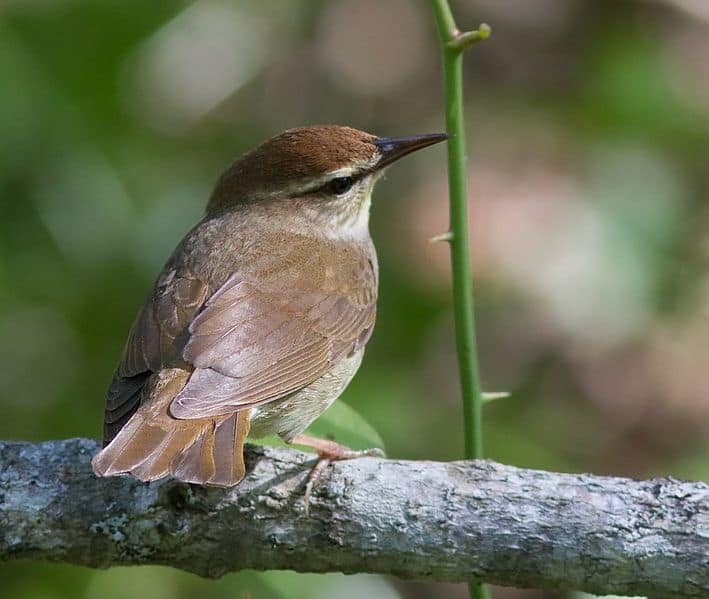
Tempting as it was to continue our lawn ornament safari, I was on a quest for one more addition to my life list: Swainson’s warbler. This big, odd, fawn-colored bird, with its eyeline and strong, icterine bill, breeds locally in great laurel (Rhododendron maximum) tangles. Viewed from a distance, rhododendrons are lovely, skylight reflecting off the broad surfaces of their leathery leaves. Abloom in July, they blaze with color, pink and white. When they stand between you and a much-desired life bird, they are infuriating. There’s just no getting through a rhododendron thicket. It’s a spiky latticework, rigged with trippers. At stop after stop, the clear, syncopated song of the Swainson’s warbler rang from deep within the dark jungles. In rhythm it was remarkably like that of the much more common hooded warbler. After several hours of straining our eyes for a glimpse, however, the Swainson’s song began to sound derisive. “Screw you! Screw the world!” the bird seemed to say.

We stopped. We listened. We looked. We saw nothing. Babcock State Park was one such stop. Blackburnian warblers gave their wiry song from the hemlocks overhead, but we had ears for only one bird, and I was determined to see it this time. Once again, we positioned ourselves abreast of the towering rhodies, staring like addled spaniels into the darkness. Finally one of our party spotted the singer, perched motionless on a limb. We all lined up and got our look. What a feeling! Flushed with joy, I watched the bird until it darted off, impressed by the length of its bill and its general robustness. Looking down, I found an ancient female box turtle at my feet. Her shell was worn almost smooth; it was impossible to tell her age. She could have been more than a century old. She rested astraddle a rotting wooden tie from a narrow-gauge railroad that once hauled coal out of these mountains. The ties staggered off into the woods, past piles of shale. Tiny broke apart the flaky rock, looking for a 4,000-year-old fern fossil in this proto-coal. I felt very, very new in these old, old hills.

Common Yellowthroat photo by Dave Menke / USFWSForestry—including clearcuts—is a way of life in any place where trees are the primary crop. And it is thanks in part to clearcuts that the area around Fayetteville, West Virginia, hosts so many warbler species. American redstart, blue-winged, prairie, chestnut-sided, common yellowthroat, yellow, yellow-breasted chat, hooded, and mourning warblers all inhabit the early successional stages that follow closely on forest clearing. As much as 60 percent of the global population of the vanishing golden-winged warbler breed in West Virginia, on just such altered habitat. Having worked as a field biologist for The Nature Conservancy, I can attest that climax forest is almost eerily quiet—all the bird action seems to happen in younger vegetation.
Warblers occurring in more mature Mountain State forests include parula, cerulean, black-and-white, ovenbird, pine, yellow-throated, Louisiana and northern waterthrush, black-throated green, black-throated blue, worm-eating, Canada, prothonotary, and the much-coveted Swainson’s warbler. It’s a breathtaking list, and it’s all there for the taking in West Virginia.
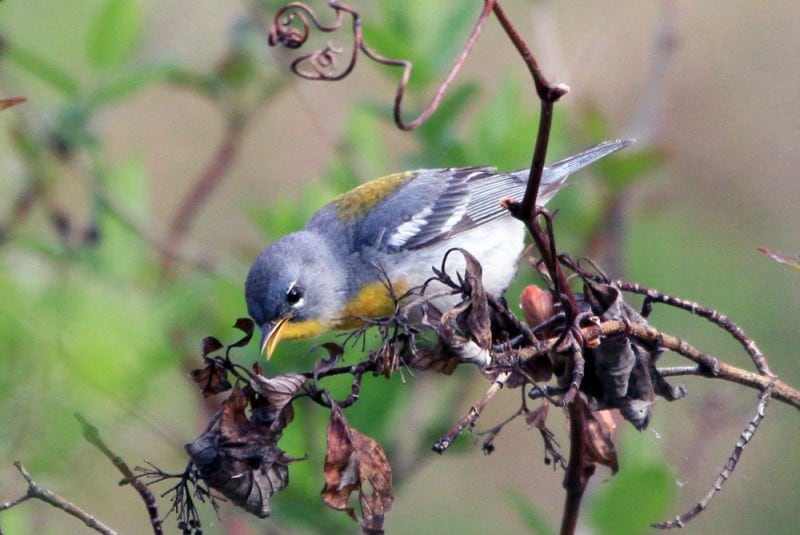
During previous travels in Newfoundland and northern New England I came to love the true boreal forest—its piny scent, soft moss-carpeted floor, utter silence, and dark majesty. On our July West Virginia visit, Bill and I drove up Cranberry Mountain, to appreciate the remnant boreal peat bogs called Cranberry Glades. Here, pitcher plant flowers nod among the feathery plumes of cotton grass. Sundews trapped tiny insects, while a northern waterthrush sang its flight song overhead. We heard the throaty calls of black-capped chickadees, which replace Carolinas on these peaks. A female yellow-rumped warbler came by, trailed by a begging juvenile, just out of the nest. We listened for olive-sided flycatchers, which also breed here, but an even greater treat awaited at the Cranberry Mountain Nature Center. Six red crossbills, in every plumage from streaky juvenile to bronze-gold subadult to tomato-red adult, perched atop the spruces, then fluttered down to a graveled landscape bed for grit. I sat, barely five feet away, drinking in these tame, oddly homely birds, seemingly a cross between a pine grosbeak and a parrot. They, too, breed here, depending on the thick stands of red spruce that crown the highest peaks.
Gaudineer Knob, also in Pocahontas County, gave us the incomparable song of a winter wren, threading through the spruce branches, even as a just-fledged family of golden-crowned kinglets followed their parents high above. Slightly lower down the mountain, hermit thrushes wove their silvery spell, while Swainson’s thrushes sounded their inquisitive Queep? We’ll return for the veery, which rarely sings until darkness falls. It’s a magic kingdom of thrushes, a place where one’s only dilemma is deciding whose song is the loveliest. Seeing all these birds nesting and feeding young, when I’m accustomed only to catching them on migration, is a rare treat, well worth the winding and sometimes hair-raising drives up and down West Virginia’s well-kept mountain roads.

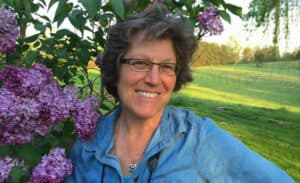
Our cabin at Opossum Creek Retreat was beckoning. Rubbing our aching warbler necks—one of the occupational hazards of watching birds in tall trees, which themselves are atop steep slopes—we repaired to the swirling hot tub on our screened porch to soak away the pain. Wood thrushes played their evening flutes, the syncopated beat of ovenbird song as counterpoint. Rose-breasted grosbeaks, scarlet tanagers, and Baltimore orioles darted through the treetops. There was no getting away from the birds, even if we’d wanted to. They sang vespers and reveille, calling us from the comfort of our beds and tucking us in each night.
We reflected that this small but convoluted state has much in common with similarly sized Costa Rica—a great diversity of birds crammed into the tremendous surface area of its mountains and valleys. Unlike the Central American country, though, West Virginia retains the great majority of its forests, as its abundant birdlife attests. Birding West Virginia takes time, and getting onto the backroads. It’s impossible to anticipate what wonders await you, while simply whizzing down the highway. You’ve got to slow down, take the side roads, and poke around. Round a corner, and there’s a faded little café. SKYLINE CAFÉ—HANK’S LAST STOP, the sign proclaims. Wait a minute. This is where Hank Williams died, sitting in his car, in a snowstorm? Nothing else marks the place, and the café, I surmise, looks much as it did that fateful night. That’s West Virginia—wild, wonderful, unexpected, a little incongruous—and utterly addictive.

Looking to Subscribe?
Get 6 print issues of the magazine delivered to your door
& free digital access
- One Year Print Subscription: $26
(to US or Canada, includes digital access) - One Year Digital-only Subscription: $15
- Two Year Print Subscription: $48
(to US or Canada, includes digital access)




